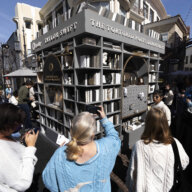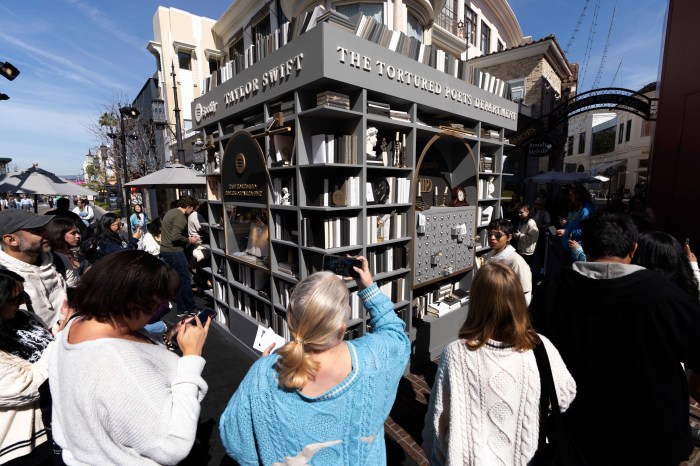 “Boffo” by William Hawkins is on display at the art museum.
“Boffo” by William Hawkins is on display at the art museum.
Credit: Philadelphia Museum of Art
Asked to define what attracted him to the work of outsider artists, Sheldon Bonovitz once blurted out a phrase that he would come to repeat often: “There’s no fence around genius.” Bonovitz, chairman emeritus of the Duane Morris law firm, repeated that story last week at the opening of “Great and Mighty Things,” an exhibition created from more than 200 pieces recently donated to the Philadelphia Museum of Art.
Bonovitz and his wife, Jill, a ceramic artist who co-founded The Clay Studio in Old City, have been collecting the work of American outsider artists for more than three decades. “We started buying when it was a very young field,” Bonovitz said at the opening. “It wasn’t until maybe eight or 10 years later that people started referring to it as a ‘collection’.”
That collection will now establish the Art Museum as one of the country’s leading repositories for outsider art, according to museum director and CEO Timothy Rub. “This gift is both transformative and also forward-looking,” Rub said, “establishing this institution as one of the leading centers in this country for the study and display of works of this type. It’s a watershed exhibition for us that makes a compelling case for the attention that should get paid by museums like ours to this fascinating and still little-known aspect of 20th-century art.”
Bonovitz defined outsider artists as having “certain common characteristics: they all are self-taught; they generally came from rural areas, untouched by the museum or gallery worlds; and they created the art because they wanted to create it, not with a view to selling it.”
The exhibition itself comprises the work of 27 artists, ranging from the chicken-bone sculptures of Eugene Von Bruenchenhein to the elaborate and colorful assemblages of Simon Sparrow and the fanciful animal carvings of Felipe Benito Archuleta to the religiously themed paintings of Howard Finster, who went on to design album covers for R.E.M. and the Talking Heads. As Bonovitz declared, the work of these artists “should appeal to children as well as to people with very sophisticated tastes in art.”






























